Navigating Amman Design Week presents the challenge of navigating an event spread across the sprawl of a riotous and rich metropolis, all complicated by the dense labyrinth of cobblestone, half-disintegrated walkways, and maniacally navigated motorways connecting the city’s numerous neighborhoods. Attendance requires comfortable shoes, the will to climb an endless gauntlet of stairways, and ideally, a local guide to untangle opportunities from deadends, for nothing in Amman is direct or straightforward.
A moment of solace and clarity was to be found in-between the 4th & 5th circle of the peaceful, tree-lined neighborhood of Jabal Amman, harbored within the shaded oasis of the Tiraz Centre.
The Tiraz Centre hosts a small but richly concentrated permanent collection of Palestinian, Jordanian and other Arab costumes from the 19th and 20th centuries, with over 2,000 costumes and weavings gracing the halls of its contemporary space. The center’s critical purpose is preservation, one represented by the Widad Kawar collection – a lifetime’s accumulation of costumes capturing the ethnographic textile language of Jordanian, Syrian, Bedouin and other Arab cultures captured in exquisite embroidered detail. Inside its walls the vibrant cultural heritage and Arab living traditions are illuminated to a blinding degree, just as it is fades in the growing shadow of modernity outside its walls.
Currently the Tiraz Centre hosts The Naqsh Collective’s “Thirst for Solidarity”, an exhibition of modern sculptural works by sisters Nisreen and Nermeen Abu-Dail awaiting contemplation and appreciation, symbolic of a region quietly deserving the attention of a world not always aware of its past, nor receptive of its present.
The Naqsh Collective’s exploration of contemporary manifestations of traditional Arabic aesthetics are represented richly through a tapestry of materials, technique, and landscape, intersecting the sisters’ historical wisdom with an acumen of modern technologies. The resulting forms are architectural, executed with jeweler’s precision: Palestinian embroidery patterns based upon traditional motifs of native flora engraved onto solid brass monoliths top Karak stone, embellished with brass shives – a miniature golden skyline at once evoking both pixel artwork of the digital age with the ancient ruins pockmarking the region. Sharing a space with the traditional embroidered garb nearby, comparisons across the ages is an integral part of the experience of the exhibition.
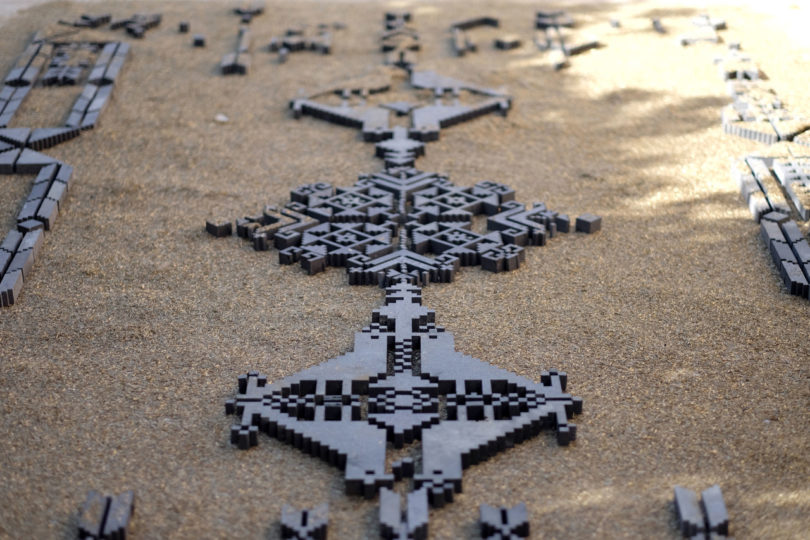
In the garden courtyard, a black floral motif of Palestinian embroidery sits atop a bed of sunlit brass filings.
Miles away at the Jordan National Gallery of Fine Arts another piece emblematic of Nisreen and Nermeen Abu-Dail’s vision of modern Jordanian art and design sits, “All in the stitch chair” a crumbling memory of a seat constructed of local stone and brass – one of many amongst a pantheon of other traditional and contemporary seats included in the exhibit, “A Chair’s Tale”. Again, an intersection of modernity, memory, and material resonates Jordan’s geography in the hands of the Abu-Dail sisters.
“Design Moves Life Moves Design” – this was the slogan chosen by Amman Design Week to represent both the challenges and aspirations of a region constrained by both political and geographical borders. But even in our short and concentrated stay in Amman, The Naqsh Collective made a convincing argument Jordanian culture flourishes forward, awakening to its future, fully aware of the challenges looming where scarcity and creativity work both at odds and in collaboration.
from Design MilkDesign Milk http://design-milk.com/naqsh-collective-dazzles-amman-design-week/


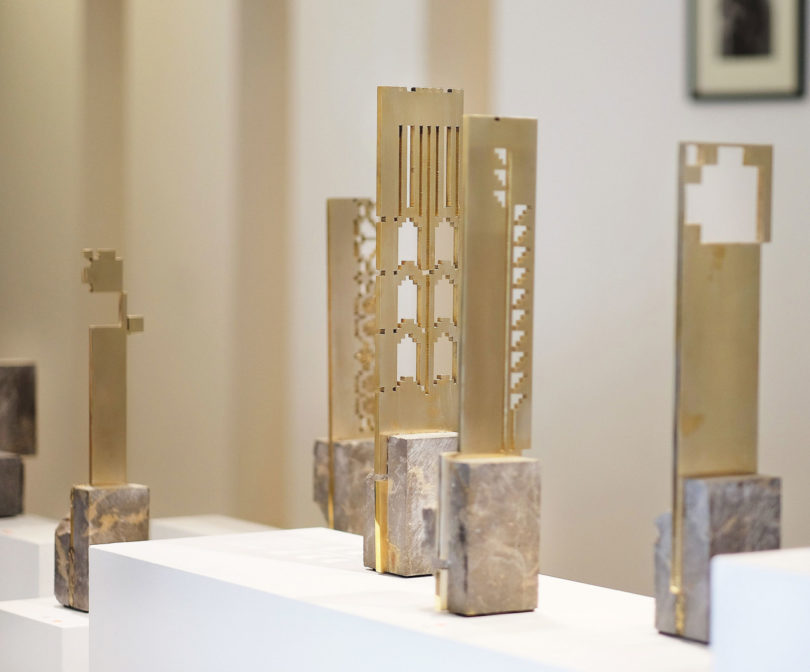

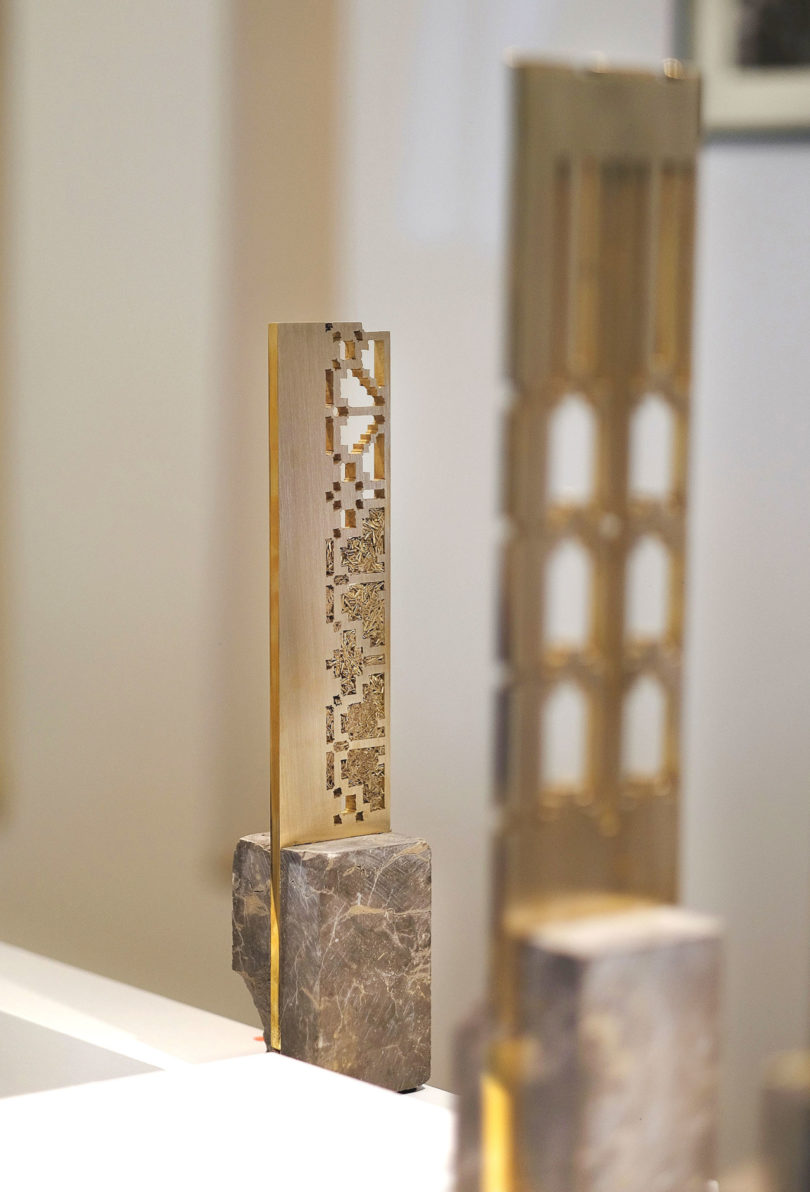

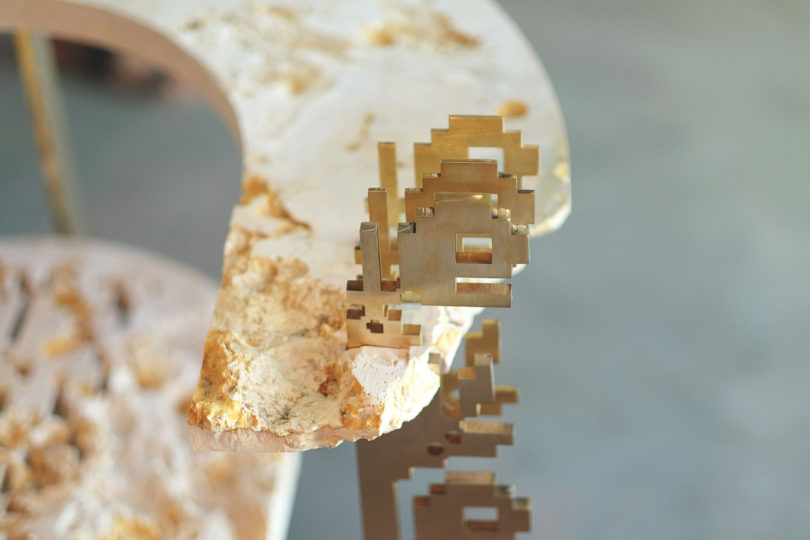

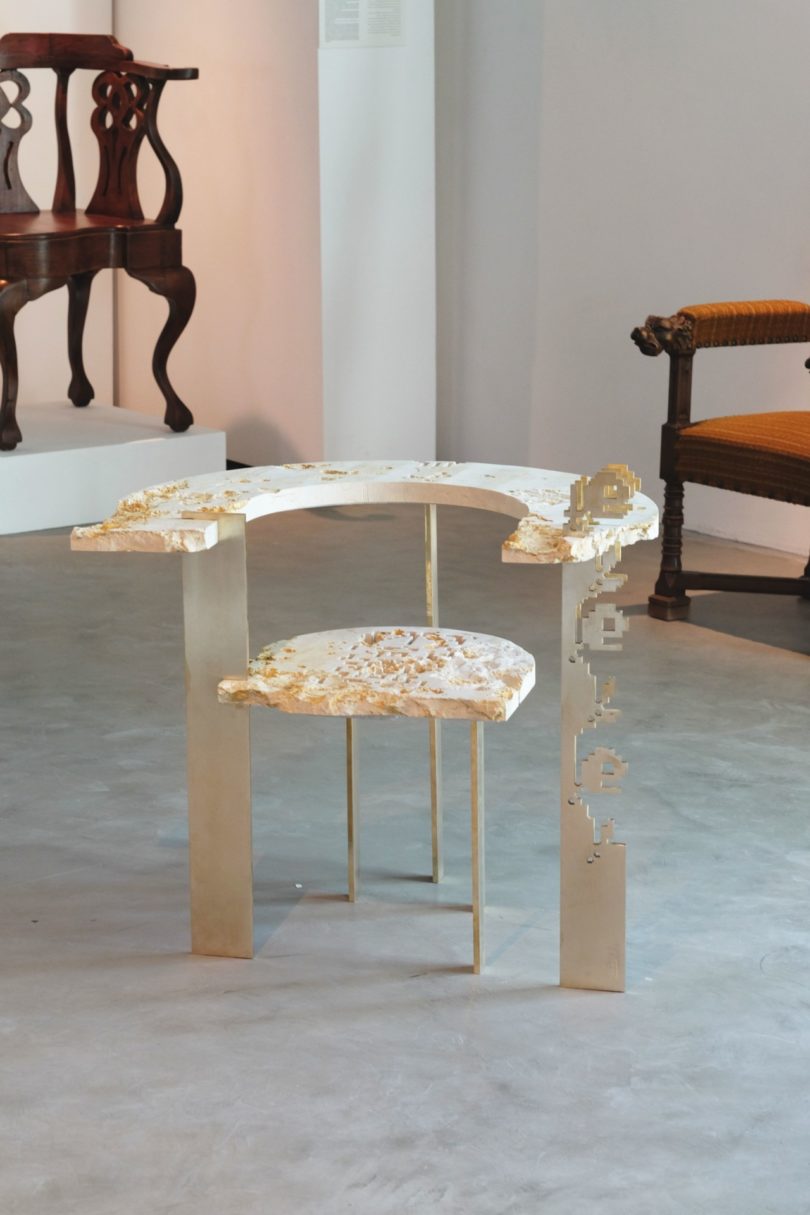
No comments:
Post a Comment